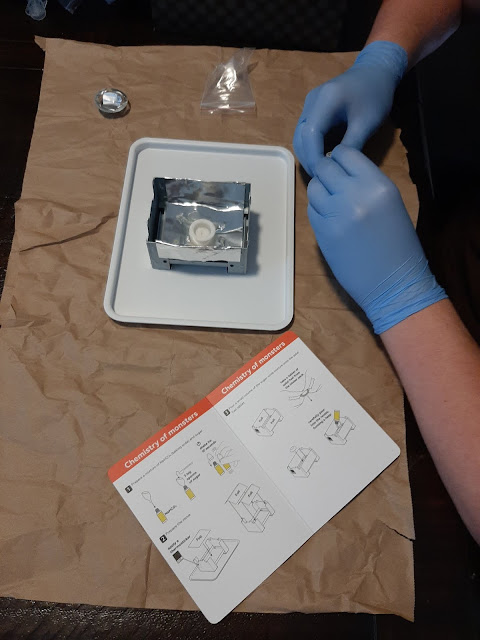Monday, August 30, 2021
Venomous Spider Study
Monday, August 2, 2021
Reptile Observation (Garter Snakes)
Garter snakes are the "fun" snakes. Although, I do not like to hold them, Skylar has no issues picking them up. There aren't many poisonous snakes within the city, I'm sure they're around, we have been lucky enough not to have any around our property.
Garter snakes in Florida are often blue. In Texas there are checkered garter snakes, and mostly active at night. Most garden snakes move around during the day, but when it's too hot they will come out more at night.
Saturday, July 31, 2021
Solar Hot Dog/Marshmallow Cooker
We've been experimenting with solar energy lately and learning how it can be beneficial for many things. The temperatures this summer have been incredibly high, with one day being over 119 degrees. We've been using these hot days and full sun to cook some food via solar cooker. Solar panels are nothing new, but solar energy can be harnessed into cooking, as well. The last few months we did a few experiments and tried out different things to cook with solar power. We constructed this solar cooker and began "cooking" different types of foods.
Monday, May 3, 2021
Insect Observation ('Greenbottle' Fly)
Along with the observation of the honey bee, we were able to observe a Lucilia 'Greenbottle' fly this week. It flew into our house and was trapped along the windowsill. We normally capture flying insects and spiders in our house and place them back outside, but with this Greenbottle fly we kept it for a few extra moments to be able to observe it's structure and study it. Skylar noted it's wing structure, compound eyes, legs, as well as the thorax and abdomen. It was a good lesson in how flies are able to land and take off quickly and use their eyes to examine their surroundings. These flies are not the greatest flies to have flying around your home, or yard. They mostly, if not entirely, depend on decaying matter, or fecal matter. They are above all the most disgusting of the flies species, but even so, it's nice to be able to study them and learn about their life. Its body is 10–14 mm in length – slightly larger than a house fly – and has brilliant, metallic, blue-green or golden coloration with black markings. These flies live less than a month.
Saturday, April 10, 2021
Insect Observation (Honeybees)
Skylar received an insect viewing kit for Easter and caught a honeybee drinking water and observed it for a few minutes before letting it free. The honeybees in our yard are abundant this season, as well as mason bees, and a bumble bees. The honeybee didn't like being captive, so we let it go quickly as not to stress it out more. She was happy to be free and even landed on the lavender before taking flight once more and heading back to her hive. We always have so many pollinators each spring and this year we plan to have milkweed growing in a pot to attract monarch butterflies.
Monday, October 12, 2020
Chemistry in the classroom (Cyanotype-Mel Science)
- Ammonium carbonate x2
- Ammonium iron (III) sulfate x2
- Citric acid x2
- Potassium hexacyanoferrate(III) x2
- Film negative
- LED for blueprint x2
- Absorbent x6
- Battery holder
- Crocodile clip wire x2
- Double-ended spoon x4
- Experiment card x2
- Instructions
- Paper sheet x7
- Pin opener
- Plexiglass
- Protective gloves
- Transparent bag with valve x2
Tuesday, May 12, 2020
Chemistry in the Classroom (Chemistry of monsters-Mel Science)
We recently started a subscription to Mel Chemistry and our first science experiment came in the mail this week. It's a chemistry lesson named: "Chemistry of monsters."
For one of the experiments it's a Sugar Snake. We used baking soda and sugar on a heated plate and grew a snake from the two. The chemical reaction with the soda, and sugar, when heat is applied was a good lesson in chemistry, for sure.
- Anthocyanin
- Citric acid x2
- Solid Fuel
- Sodium carbonate x2
- Sodium hydrogen carbonate x2
- Aluminum foil x5
- Double-ended measuring spoon x2
- funnel
- Liquid soap x2
- Protective gloves
- Syringe without needle
- Thermochromic sticker x2
- Wooden stick x4
- Experiment card x2
- Instructions
Sugar Snake: (Grow a black snake out of sugar!)





















































